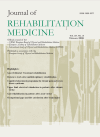
PHYSICAL THERAPY & REHAB
Cost-effectiveness of medical yoga for non-specific low back pain
This report has been verified
by one or more authors of the
original publication.
J Rehabil Med. 2015 Jan 27;47(2):167-73.
153 patients with non-specific low back pain were randomized to participate in medical yoga, exercise therapy, or self-care advice treatment. This was done to assess the cost-effectiveness of various treatment methods for low back pain. Health-related quality of life as well as quality-adjusted life year value were assessed over a period of 12 months. Results indicated that, for patients complying to the treatment regimen, health-related quality of life was similar between the medical yoga group and the exercise therapy group, and was significantly higher in the medical yoga group than the self-care advice group. Differences between groups were non-significant in noncompliant patients. Mean societal burden, including direct and indirect costs, was lowest in the medical yoga group.
Unlock the full ACE Report
You have access to {0} free articles per month.Click below to unlock and view this {1}
Unlock NowCritical appraisals of the latest, high-impact randomized controlled trials and systematic reviews in orthopaedics
Access to OrthoEvidence podcast content, including collaborations with the Journal of Bone and Joint Surgery, interviews with internationally recognized surgeons, and roundtable discussions on orthopaedic news and topics
Subscription to The Pulse, a twice-weekly evidence-based newsletter designed to help you make better clinical decisions
Exclusive access to original content articles, including in-house systematic reviews, and articles on health research methods and hot orthopaedic topics
Or upgrade today and gain access to all OrthoEvidence content for just $1.99 per week.
Already have an account? Log in


Subscribe to "The Pulse"
Evidence-Based Orthopaedics direct to your inbox.
{0} of {1} free articles
Become an OrthoEvidence Premium Member. Expand your perspective with high-quality evidence.
Upgrade Now













































































